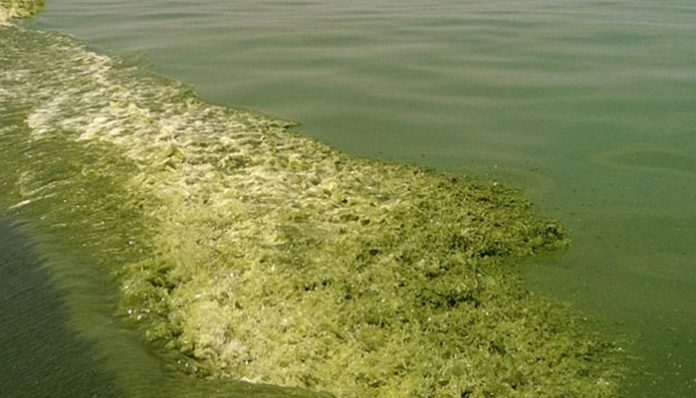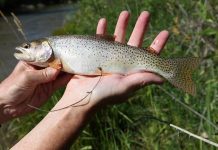
UINTAH COUNTY, Utah, Aug. 14, 2019 (Gephardt Daily) — Matt Warner Reservoir in Uintah County has been placed on a “warning” level due to an algal bloom with cyanotoxins exceeding recreational health.
TriCounty Health Department said in a news release it posted danger signs at the reservoir Monday, warning the public not to fish, swim or recreate in the water due to the harmful algal blooms.
Utah Division of Wildlife Resources Director Mike Fowlks issued an emergency amendment to the 2019 Utah Fishing Guidebook due to Matt Warner Reservoir being temporarily closed to fishing, the news release said. After consulting with officials from the Health Department, Utah DWR made the decision to close the waterbody to fishing from Aug. 13 to Sept. 30. That means that it will be illegal for anyone to fish at the reservoir during that time and anyone found fishing there could be cited, the news release said.
The Utah Department of Environmental Quality took water samples at Matt Warner, the news release said. A recent sample showed 109 million cells per milliliter of cyanobacteria — more than 11 times higher than the Environmental Protection Agency’s threshold for closure.
“The risk to humans and animals is too great,” Fowlks said. “All contact with the water and any fish in the water should be avoided until the algal bloom subsides and toxicity levels decrease. Typically, it is still safe to fish during algal blooms, but these levels caused safety concerns for any kind of contact with the water.”
Hunting and camping in the Diamond Mountain Wildlife Management Area will still be allowed. However, campers and hunters with dogs should avoid the area unless they can ensure that their pets will not get in the water.
The Health Department said visitors to the reservoir should follow the following guidelines:
- Do not swim or water ski
- Do not ingest the water
- Keep pets and livestock away
“Harmful algal blooms occur when normally occurring cyanobacteria in the water multiply quickly to form visible colonies or blooms,” the Utah DEQ website says. “These blooms sometimes produce potent cyanotoxins that pose serious health risks to humans and animals.
“Although most algal blooms are not toxic, some types of cyanobacteria produce nerve or liver toxins. Toxicity is hard to predict in part because a single species of algae can have both toxic and non-toxic strains, and a bloom that tests nontoxic one day can be toxic the next.”
Symptoms of exposure include headache, fever, diarrhea, abdominal pain, nausea and vomiting, and sometimes allergic-like reactions from skin contact.
For concerns about possible human exposure, call the Utah Poison Control Center at 800-222-1222, or your physician.
For more information about algal blooms click here.





